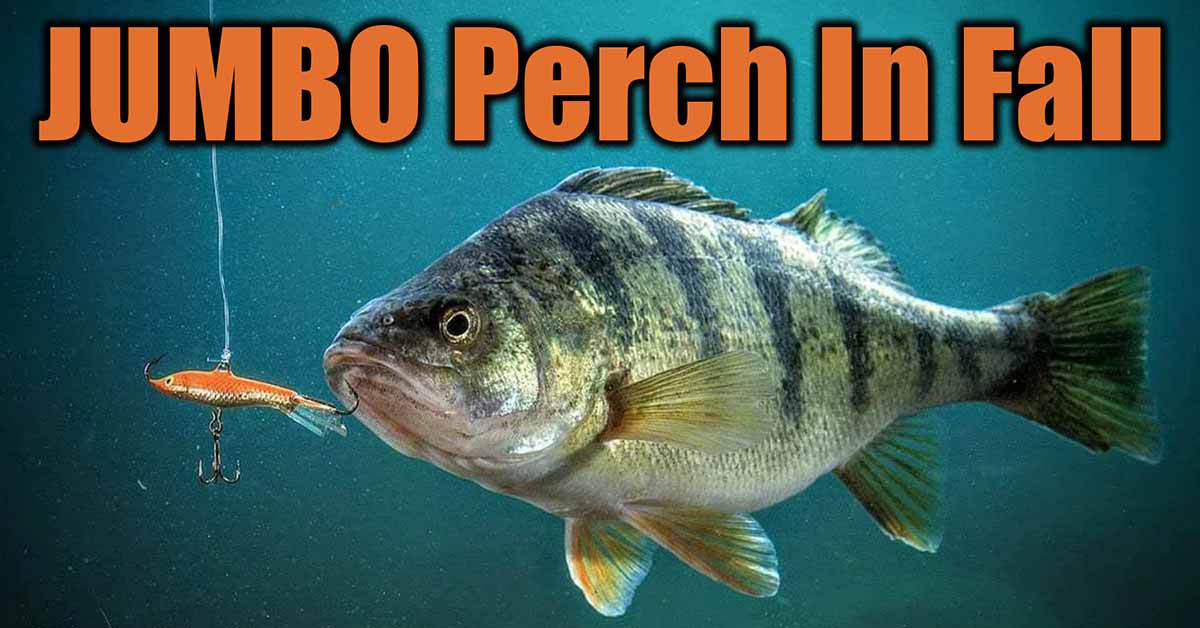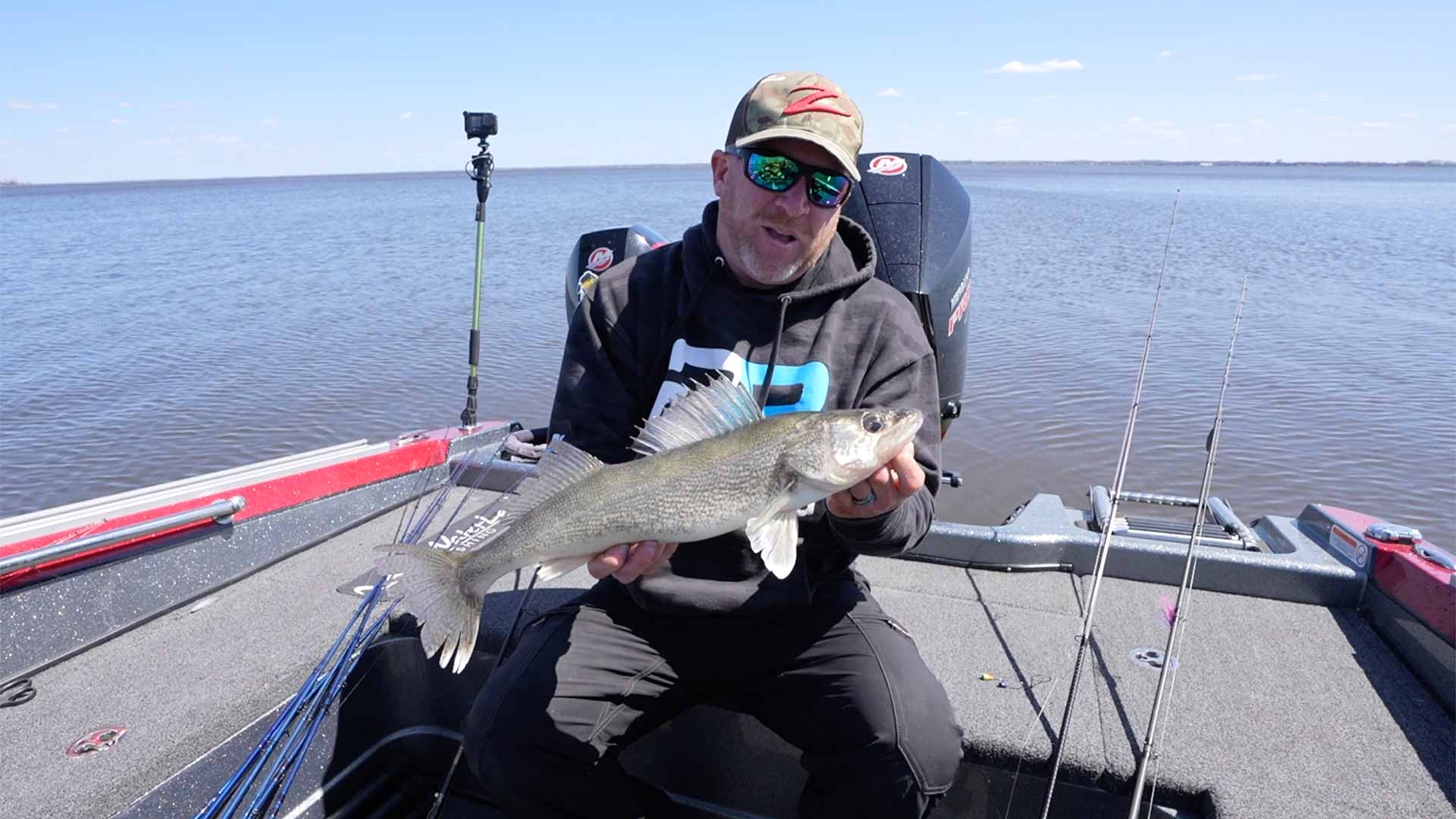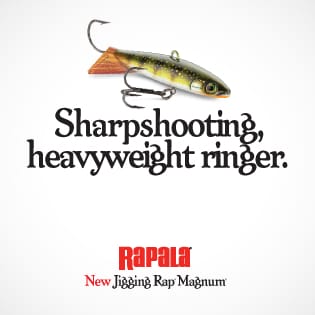Jumbo Perch are popular ice-fishing targets in the winter, but anglers can have great success targeting these perch during fall.
Jumbo Perch In Fall
Jumbo Perch In Fall, known regionally as “jumbos,” are popular ice-fishing targets throughout the winter months. They provide good action, fight hard on light tackle, and for many anglers, make a great meal. Perch are usually plentiful, so keeping a reasonable number of fish while avoiding overharvest is like having your cake and eating it, too.
The question is, “Why wait for ice-up to catch them?” Good question! The answer is, “You don’t have to. You can catch them right now, during fall, in many of the same spots they’ll be during winter. And, you can do it from a boat, rather than atop the ice.”
By mid- to late-fall, perch begin shifting a bit deeper, from weedlines and perhaps sandgrass beds lying just outside the tall standing weeds. They settle down to the base of the dropoff—and then commonly roam across the adjacent basin. Not necessarily far out across the basin—although nothing’s stopping them from doing so. More likely, just a little bit outside harder-bottom structure.

Roaming the soft basin like a herd of cattle grazing on grass, perch progressively work over areas, nibbling on all manner of insects, worms and minnows. Once the food is depleted in an area, they move on. So, they can literally be here today, gone tomorrow.
This makes electronics key in your search for perch. Cruise the base of dropoff, just like you’d do for walleyes, and then move a little deeper, checking for the presence of bottom-hugging fish near the basin. Jumbo Perch tend to be huggers, rather than suspenders.
The shallow, dingy-water natural lakes of the eastern Dakotas, basins may only be 9 or 10 feet deep. In clear-water natural lakes in Minnesota and Wisconsin, the best perch areas might be in the 20- to 30-foot range. In both cases, it’s the soft basin immediately adjacent to prominent mainlake structures that attract perch in fall and throughout the winter months.
Catching perch is usually easy; their abundance and competitive nature tends to make them biters as opposed to lookers. A simple 1/16- ounce jig & crappie minnow, or 1/8-ounce jig tipped with a 2-inch soft plastic tail, is usually adequate for catching them. Just lower it to the bottom on 4- to 6-pound-test line, lift it up and down a few times to disturb the mud and draw their attention, and then hold it still. It doesn’t take long if they’re around. Fish on.

Small, #5 Jigging Rapalas are ideal for perch. They bang bottom, swim and swirl on the drop, and are lifelike in appearance. Tip a minnow head on one tine of the treble hook if they’re fussy, just like in ice fishing. In open water, though, an unbaited lure is usually productive.
In the Dakotas, anglers typically use a simple, fairly short snell and hook on a bottom bouncer, slowly trolled or drifted across the basin to locate and trigger perch. On the Great Lakes, spreader rigs, weighted at the bottom, provide several leaders and hooks baited with minnows, hooked up through the lips.
The key to catching jumbo perch, rather than small perch, is to fish lakes where big perch are common. The top choices are fertile lakes in the eastern Dakotas, select natural lakes in Minnesota and Wisconsin that are known for producing large perch, and areas of the Great Lakes where big perch are common.










